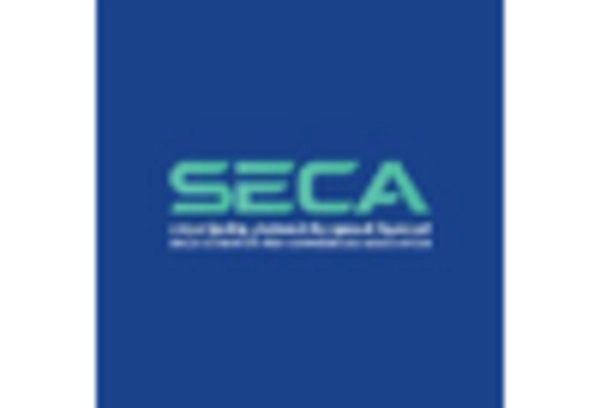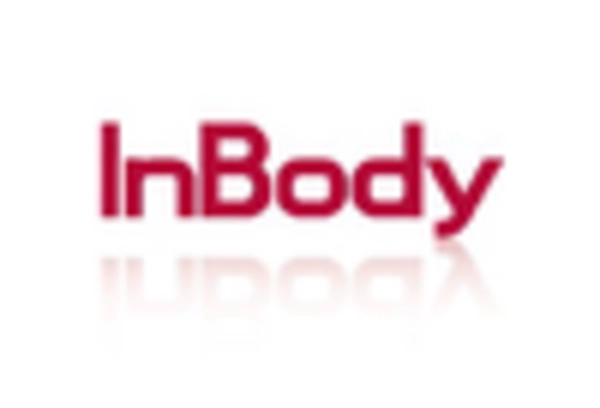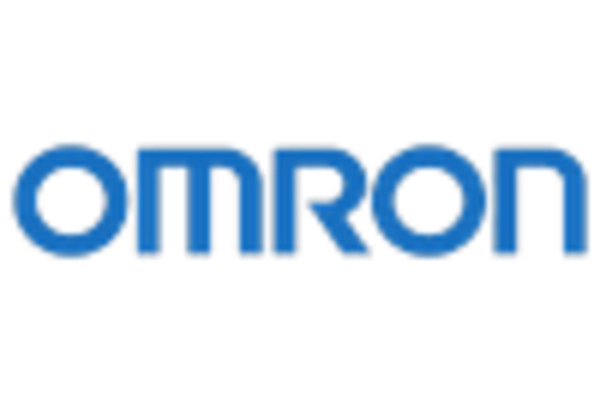Growing Aging Population
The aging population in South Korea is a significant driver for the body composition-analyzers market. As the demographic shifts towards an older age group, there is an increasing need for health monitoring tools that can assist in managing age-related health issues. Body composition analysis becomes vital for older adults to monitor muscle mass and fat distribution, which are critical for maintaining overall health and preventing chronic diseases. Reports indicate that by 2025, over 20% of South Korea's population will be aged 65 and above, creating a substantial market for body composition-analyzers tailored to this demographic. The body composition-analyzers market is thus likely to expand as healthcare providers and consumers recognize the importance of regular body composition assessments in promoting healthy aging.
Health Insurance Incentives
Health insurance companies in South Korea are beginning to recognize the value of preventive health measures, which is positively impacting the body composition-analyzers market. Insurers are increasingly offering incentives for policyholders who engage in regular health assessments, including body composition analysis. This shift encourages individuals to monitor their health metrics actively, leading to a greater demand for body composition-analyzers. As more people seek to qualify for lower premiums or rewards, the market is likely to see an uptick in sales of these devices. The body composition-analyzers market stands to benefit from this trend, as it aligns with broader public health initiatives aimed at reducing healthcare costs through preventive care.
Increasing Fitness Awareness
The body composition-analyzers market in South Korea is experiencing growth due to a notable increase in fitness awareness among the population. As more individuals prioritize health and wellness, the demand for accurate body composition analysis tools rises. This trend is particularly evident in urban areas, where fitness centers and health clubs are proliferating. According to recent data, approximately 30% of South Koreans engage in regular physical activity, leading to a heightened interest in monitoring body metrics. This awareness drives consumers to seek advanced body composition-analyzers that provide detailed insights into fat, muscle, and hydration levels, thereby enhancing their fitness regimes. The body composition-analyzers market is thus positioned to benefit from this growing consumer base that values health metrics as part of their fitness journey.
Technological Advancements in Devices
Technological advancements play a crucial role in shaping the body composition-analyzers market in South Korea. Innovations such as bioelectrical impedance analysis (BIA) and dual-energy X-ray absorptiometry (DEXA) have significantly improved the accuracy and reliability of body composition measurements. These technologies allow for more precise assessments of body fat, lean mass, and water content, which are essential for both fitness enthusiasts and healthcare professionals. The integration of smart technology, such as Bluetooth connectivity and mobile applications, further enhances user experience by enabling easy data tracking and analysis. As a result, the body composition-analyzers market is likely to see increased adoption of these advanced devices, appealing to tech-savvy consumers who seek comprehensive health insights.
Rising Demand in Sports and Fitness Sectors
The body composition-analyzers market in South Korea is significantly influenced by the rising demand from the sports and fitness sectors. Professional athletes and fitness trainers increasingly rely on precise body composition data to optimize performance and tailor training programs. This trend is evident in various sports disciplines, where understanding body fat percentage and muscle mass can lead to improved athletic outcomes. Furthermore, fitness facilities are incorporating body composition analysis into their services, enhancing their offerings to attract more clients. The body composition-analyzers market is thus poised for growth as sports organizations and fitness centers invest in advanced analysis tools to support their athletes and clients in achieving their health and performance goals.

















Leave a Comment